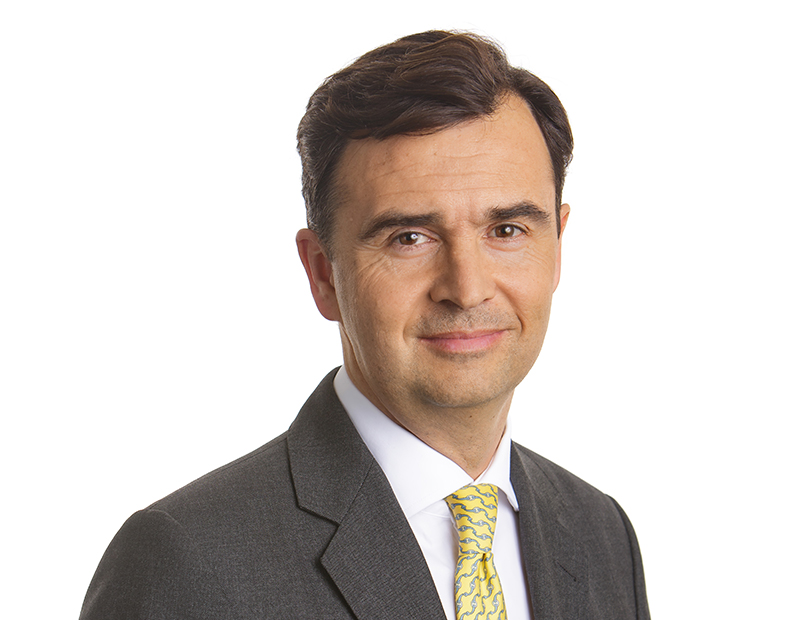Q&A: JLL’s Ulbrich on HFF Buy and Beyond
Christian Ulbrich sets the stage for JLL after its acquisition of HFF and shares his expectations for the capital markets in the context of a possible economic slowdown.
As the ink dries on JLL’s $1.8 billion acquisition of HFF, which closed on July 1, many in the commercial real estate industry are watching closely to see what’s next for the newly expanded advisory and services powerhouse. Commercial Property Executive reached out to JLL Global CEO Christian Ulbrich for a perspective on the next chapter. Ulbrich touched on potential directions for growth, as well as the challenges of navigating a late-cycle environment.
READ ALSO: JLL Closes on $1.8B Acquisition of HFF
What can you tell us about JLL’s acquisition of HFF? What factors made it a good move in this late-cycle economy?
Ulbrich: Our Beyond strategy for long-term growth is driven by four global trends: the ongoing rise in investment allocations to real estate, the continuing increase in outsourcing by real estate occupiers, the shift toward urban living and rapid advances in technology. The acquisition of HFF supports the ability of our Capital Markets business to provide enhanced services to our investor clients and capitalize on increasing investment allocations and strong cross-border transactions activity.
What will your strategy focus on now, post-merger?
Ulbrich: The acquisition of HFF, a company that we have long admired for its culture of excellence and client-first teamwork, provides us with a unique opportunity to accelerate our growth and best meet our clients’ needs. Our clients will benefit from our newly-combined talent, scaled global offering, deeper market intelligence and continuous investment in innovation. Our strategy post-merger is to combine our two talented teams of 3,700 professionals across 47 countries to create one of the most strategic, connected and creative capital advisors in the world.
Any other similar M&A deals in the pipeline?
Ulbrich: We will continue to consider opportunities consistent with other elements of our Beyond strategy, especially our Corporate Solutions business.
Tell us about the trends and challenges in today’s key debt markets.
Ulbrich: The debt market remains active and liquid. In fact, last year saw record debt originations in the U.S., 15 percent higher than in 2007. Multifamily and industrial sectors had the largest increases in U.S. debt origination volume over the past year. Both of these sectors are posting rent growth at more than twice the rate of the office sector and attracting an increased share of overall commercial real estate investment volume. This is driving increased acquisition lending, constructing lending and refinance activity for these asset types.
With interest rate hikes paused, what new risks are on the horizon?
Ulbrich: The Fed is placing emphasis on ongoing low inflation and trade-related risks, making it more likely we’ll see a reduction in interest rates in the near future. This stands to bolster investor sentiment and lending markets, but leaves the Fed with less firepower for future cuts in response to slowed growth.
What are your views on successfully navigating an economic slowdown?
Ulbrich: Properly evaluating opportunity and risk is essential no matter the stage of the market cycle. Certain sectors, such as multifamily and industrial, are particularly attractive due to higher rent growth. The real estate property market will continue to experience cycles, but I’m very confident that our team is prepared to help our clients navigate rough waters. For JLL I can say that, in the past, economic slowdown has led to market share growth for us.
How do you see the capital markets landscape in 2019? What are your expectations going forward?
Ulbrich: We expect to see global commercial real estate maintain its strong performance, although we are forecasting transactions volume to be down 5–10 percent this year, globally. Though property yields remain compressed, falling risk-free rates have helped to stabilize or, in some cases, widen spreads, keeping real estate investment an attractive option for investors. Meanwhile, capital values and rents are both expected to edge up in 2019. There is still strong investor appetite globally for the right assets, especially in the U.S. multifamily and logistics sectors, which are leading the way in terms of liquidity.









You must be logged in to post a comment.